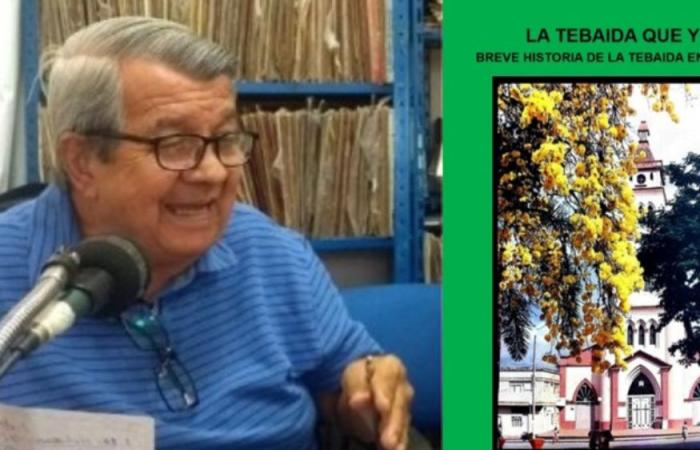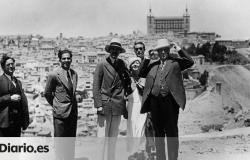By Francisco A. Cifuentes S.
Member of the Academy of History of Quindío
“Life is not what one lived, but what one remembers and how one remembers it to tell it” (Gabo)
It is not without reason that the municipality of La Tebaida (Quindío), being so young, just over a century old, has to its credit a fairly significant accumulation of already published historical knowledge. Well, this experience of writing and specifically of regional and local historiography, is from the very beginning of a well-designed coffee and harvesting village; whose archaeological and anthropological aspects were recorded for history and subsequent investigations by one of the main founders of the region, who was then from Calden. This is the iconic work “Memories of the Guaquería in Quindío” by Don Luis Arango Cardona and later enhanced by the prolific pen of his son, Doctor Jesús Arango Cano; who extended into literature, history, geography, economics and folklore; being recognized, to the pride of all Quindianos, in the National Academies of Language, History, Geography and Economics.
This legacy has been taken up by several friends with great modesty, but with dedication and love for the small country and for intellectual struggles, in various fields related to historical research: Alejandro Vallejo from journalism, literature and history itself. Luis Carlos Reyes Puentes with substantial contributions to the history of politics, personalities, administration and sports and also from journalism. Fernando Jaramillo with a very judicious regional and national research work, ranging from the Coffee Cultural Landscape to other dimensions; in addition to being one of the most renowned members of the Departmental Academy of History of Quindío. Heriberto Vargas Sánchez, who has contributed for several decades, from cultural management, historical photography and chronicle, to this historical and cultural heritage. Alexander Girón Torres with almost a hundred profiles of Tebaida characters and with selfless dedication as Director of the Local History Center of La Tebaida (Q). Guillermo Valencia Marín with four works published in various areas of knowledge, in addition to his long journalistic work. Nidya Ríos and Aleyda Botero have exhaustive research on the history of all the neighborhoods in the municipality. Juan Carlos Ramírez Gómez with an extensive historical conference and multiple literary writings. Juan Carlos Ramírez Gómez (Procopio) with a book about the life of his father and the muleteers. Fernando Cardona, who makes local history through stories and poetry. A very special case is that of John Fidel Ocampo, a master of oral history and from whom it is necessary to draw upon to specify local and regional historiography. To this universe we must add all the playwrights, musicians, painters, journalists and other cultists who give the profile to the cultural history of the municipality, the region and the nation. The historian Hernando Muñoz Cárdenas, is already an adopted son of La Tebaida and as Rector of the Antonio Nariño Educational Institution, Vice President of the Departmental Academy of History of Quindío and Member of the Local History Center of La Tebaida, he is one of the main guides of this discipline among us. The jurist José Fernando Ramírez Gómez, as a writer on law in Colombia. With various contributions we cannot forget several personalities from or linked to the municipality such as Jaime Hurtado Garavito, Leoncio Aristizábal, Lady Londoño, Gilberto Naranjo, Hernando Marín, Jaime Lara Ramírez, José Jaramillo Vallejo, José Jaramillo Mejía, Alfonso Osorio Carvajal, Martha Usaquén, Diana Giraldo, Ligia Inés Vélez, Luz Marina Botero, Alexander Carvajal, Martín Bolívar, Gentil Guerrero, Néstor Arango, Luis Ángel Marín, Alfonso Vargas, Juliana Buitrago, Libaniel Gómez, Ferney Álvarez, Aleyda Londoño, Mélida Marín, Carmela Henao, Fernando Echeverry , Luis Eduardo Mendoza, Jorge Iván López, Natalia Botero, Antonio Mendoza, Gonzalo Uribe, Nicolás Uribe, Gildardo Tovar, Juan Diego Infante, Rafael Ricardo, Hugo Buitrago, Estefanía Huérfano Rojas, the journalists of the Duque family. Mario Gómez Ramírez, twice governor of Quindío, great guide to civility and politics in the department, businessman of national stature, and Rodrigo Londoño, former FARC guerrilla, co-author and signatory of the Peace Agreement of Quindío, are undoubtedly historical figures in life. 2016. I do not record other personalities in detail here, since they are included in my two books about the municipality: La Tebaida (Q) from 1993 and La Tebaida (Q): Territorio Sociedad y Cultura from 2024.
All of the above is what we can properly call the Tebaiden Historiography and the multiple compendium of the social and cultural history of the Municipality of La Tebaida. It is in this tradition and in this context that the emergence of the great work that we celebrate today is framed: “La Tebaida That I Lived: Brief History of La Tebaida between 1954 and 1972” by Magister Gonzalo Cardona López (Impreleos. Armenia. 2024 ). Everything that is written here can be considered within what Martin Heidegger distinguished between living, dwelling and inhabiting, to characterize a house, a block, a neighborhood and a city, like what others have called topophilia; that is, the love for the territory. In such a way that this book becomes part of the current of the social and cultural history of a town and a region.
It is worth highlighting the approaches and methodological tools that Gonzalo has used here to give birth to this work: he resorts to the research of oral tradition, so abundant and rich in this region of the country; to the experiential knowledge of a special time of him as a protagonist in three decades as important as the fifties, sixties and seventies. It uses personalized interviews with about one hundred and twenty living witnesses of local history, spontaneously or directed. It is practically an exercise typical of what is known as historical ethnomethodology; for which he makes a systematization of his experiences and those of his peers. Of course, his book recognizes the background of his readings and professional studies in education, linguistics, literature, philosophy and therefore the discipline of history. To a large extent it can be said that it is an autobiography expanded to the direct knowledge of the people who lived through the events of La Tebaida when it was just a town, a parish, a hamlet and a town until it became a municipality itself, first Caldense and later Quindian. He thus moves away from archival and documentary research, towards his own life and the testimonies of many inhabitants.
The educational sector is very well detailed in this historical tour; thus recognizing the great role of teachers, students, administrators and educational institutions that have decisively contributed to the construction of society and culture in these territories. A person like Gonzalo, at the time a student at all levels, teacher and director, knows this racking inside out, which he knew how to convey here with impeccable documentation and experience.
The historian Gonzalo makes a very precise and detailed description of the urban composition of the municipality; but transcending geography and turning to sociology, since it deals with the inhabitants block by block. That is to say, there exists here a true genealogy of Thebaiden society and its habitat, adding to it a map of its authorship, which will surely feed other investigations. It is good to note that the book by Ríos and Botero, as well as my latest text, are in that vein; but they distance themselves in many other aspects.
His meticulous and unprejudiced history of the popularly called “Zone of Tolerance” reminds us of the pioneer of this topic, back in 1777, when “The Art of Whores” by Nicolás Fernández de Moratín was published in Spain, which was immediately included in the “Index Librorum Prohibitorum” of the Catholic Church of the late period of the Inquisition; A question that fortunately is not going to happen to our smiling and playful historian, in these already very liberal times. The recording and analysis of what has happened in the red light district, red zone or hot land, is already part of several lines of research, and which have produced interesting writings in Bogotá, Cali, Medellín and Armenia; but they can also be related to the famous “City Studies Program” of the Latin American Faculty of Social Sciences (FLACSO), with a very important work by Fernando Carrión. It is also worth noting that this issue is very important today in urban planning and modern planning, when Territorial Planning Plans (POT) are designed, in order to delimit certain areas of special leisure and recreation, typical of cities and their citizens. . But, in addition, it is worth saying, those who have studied tango, as is the case of Gonzalo Cardona, know that the zones of tolerance or the suburbs are linked to the urban, social and cultural history not only of Argentina, but of our towns. .
We must remember here the “Critical notes on the Bogota language” by Don Rufino J. Cuervo and “The language of the Argentines” by Jorge Luis Borges and other studies of dialectology and paremiology, in order to relate them to the last chapters of the text de Gonzalo, where he includes the idioms, proverbs, expressions, sayings, sayings, customs and nicknames or remoquetes of the population and their usage during the historical period treated, but which are still partly known and used. This is a very important part of social and cultural history, through the recording of speech, terms and expressions that give personality to a society.
Welcome to this wonderful work from one of our most distinguished members of the Local History Center of La Tebaida. We want readers of all ages and regions to assume this, since it enters the heritage of the culture and historiography of our society. Surely, in addition to the enjoyment that reading provides, it will be a key piece for subsequent researchers in various areas of social knowledge. Congratulations and recognitions to the great intellectual and friend and welcome to history fully.






